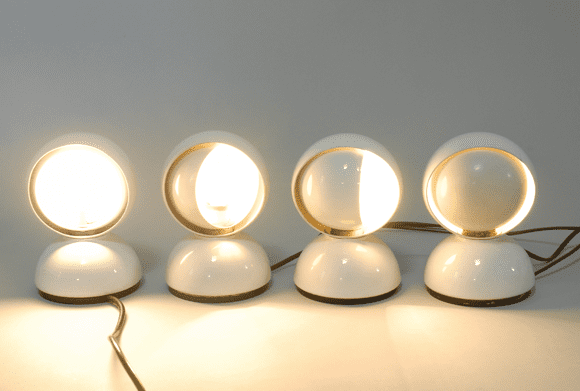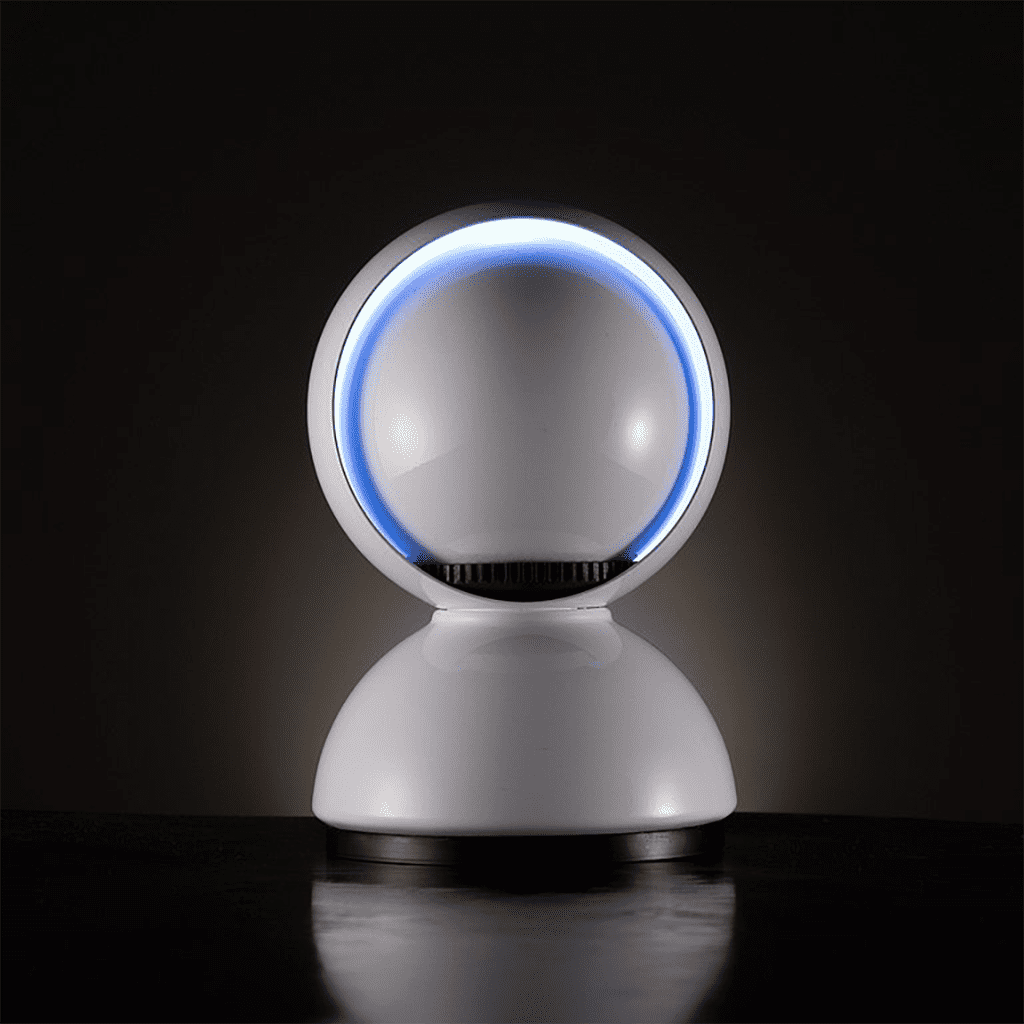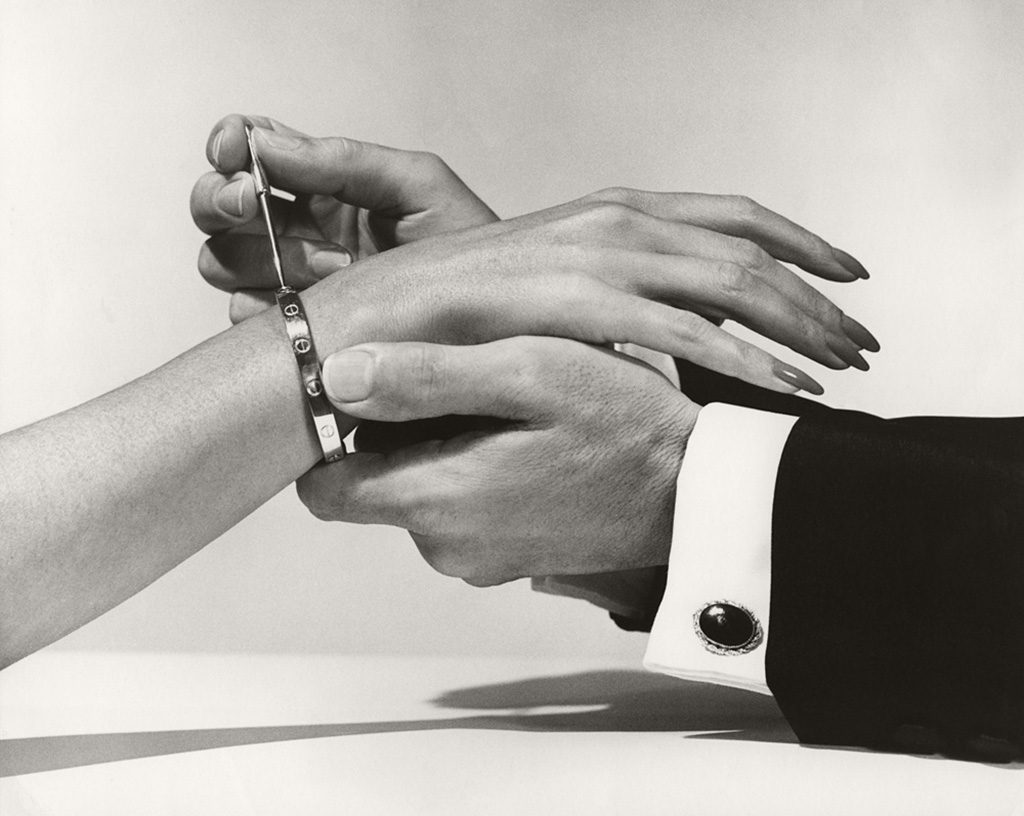Eclisse, the iconic lamp of Italian design by Vico Magistretti, small and delicate is still a quality furnishing accessory. A balanced mix of art, design and geometry, it brings a different light to every room.
It was first produced in 1967, in the years of the space race. In the same year it won the Compasso D’oro award with this motivation “the Commission considers that the object presented has the double quality of a high design-aesthetic value and a possible mass diffusion. It also emphasises the novelty of the technical solution which, through a simple rotating screen movement, graduates the intensity of the light output.”

A leap back in time
Ludovico Magistretti (Milan 1920-2006), known as Vico, was one of the leading exponents of the third generation of Modernists. The son of a generation of well-known architects, in 1943, during his military service and the war years, he left his studies at the Milan Polytechnic to avoid deportation to Germany.
He thus moved to Switzerland, where he took academic courses at the Champ Universitaire Italien in Lausanne. There he met Ernesto Nathan Rogers, founder of the B.B.P.R. studio and a key figure in his education, so much so that he recognised him as a teacher. Magistretti graduated in Architecture from the Milan Polytechnic in 1945.
His early working years
Upon his return to Italy, he started his architectural work at his father’s studio, together with a friend. In the 1950s his work focused on giving new light to Milan, which had become a city devastated by the darkness of the war that had just passed. He worked on projects related to the reconstruction of the city and became one of the founders of the Association for Industrial Design (ADI).
Between 1949 and 1959, he realised around fourteen interventions forINA-Casa and participated in the collective undertaking of QT8. In the 1960s he started collaborations with Artemide, Cassina and Gavina, designing other key pieces of contemporary industrial production.
It was with Artemide that he created Eclisse, still today icons of Italian-made products, such as Mania (1963), Chimera (1969) and Teti (1970). Again with Artemide he created the Selene chair in 1969, which was among the first industrial productions of moulded plastic chairs.

Eclisse iconic lamp – the idea and the inspiration
Magistretti recounted that he had been given the task by Ernesto Gismodi, co-founder of Artemide together with Sergio Mazza, to design a bedside lamp, as everyone has a small light next to the bed to read or relax.
The inspiration for Eclisse came in 1965, while taking the metro in Milan. He remembered Jean Valjean ‘s blind lantern from Victor Hugo‘s Les Miserables, used by thieves, where the light passed through a circular hole and could be adjusted by means of a rotating screen.
He took the underground ticket he kept in his pocket and sketched a sketch of the lamp on the back. Thus the basic concept was born: adjusting the intensity of the light with a rotating shade that eclipses the glow.

The refined, geometric design
Eclisse is composed of three hemispheres: one that acts as a base, one as a fixed cap and the last, smaller and placed inside, which rotates on a central pivot and allows the luminous flux to be regulated through movement .Thanks to this peculiar composition, the light can produce the solar eclipse effect and can provide both direct and diffused light. Eclisse is available in red, white, yellow and orange.
Initially produced in aluminium, the overheating of the walls was solved by the introduction of a plastic ring, which prevented direct contact between fingers and the metal body. However, it seems that this mattered little to Magistretti, in fact Gabriele Neri, architect and writer commented: ‘Magistretti enjoyed imagining how many people had made love with his lamp nearby and at the same time, how many fingers burnt’.
Eclisse: a lamp that knows how to be ecological
In terms of environmental friendliness, Eclisse is at the forefront: its latest PDV version is environmentally friendly and features one of the cleanest coating technologies to date, as only non-harmful metals are used. It is available in brass, copper, black or mirror.
Interesting facts about Eclisse
During an interview, Magistretti was asked which object he would like to sign, and Magistretti replied ‘The umbrella. (…) Instead, I ended up designing that silly lamp, the Eclisse, which however still lasts because it marked, even with the burns on my fingers, a few generations. This is a great satisfaction, it gives you a sense of the object produced because, evidently, it responded to some need that had nothing stylistic about it’.

The exhibitions of Eclipse
Eclisse has been in the permanent collection of the MoMa in New York since 1972, in that of the Milan Triennale and in other museums of global renown. It remains in homes its most intimate and artistic manifestation, which still manages to convey emotions.
Other important collaborations by Magistretti
With Oluce, for whom he also became art director, he created the famous Atollo (1977) and other models, including Snow (1974) and Sonora (1976) .
For forty years, Magistretti was involved in the design of furniture, from those created for Cassinaincluding the Maralunga sofa (1973), the Sindbad sofa (1981) and the Veranda armchair (1983). He began collaborations that became fundamental such as the one with dePadova, forwhomhe createdthe Marocca (1987) and Incisa (1992) chairs and the Vidun table (1987).
He often focused on experimenting with precise types of furniture, such as the kitchens for Schiffini or the beds for Flou, including the Nathalie of 1978, the first fully upholstered bed, or the Tadao of 1993 made with wheels on the sides of the headboard, easy to disassemble and environmentally friendly.
Erica Batisti
@Stiledesign. Reproduction reserved
You might also be interested in:


![Vico_magistretti erica 3[4614] Magistretti e la lampada eclisse](https://www.stiledesign.it/wp-content/uploads/2023/06/Vico_magistretti-erica-34614-1.png)







